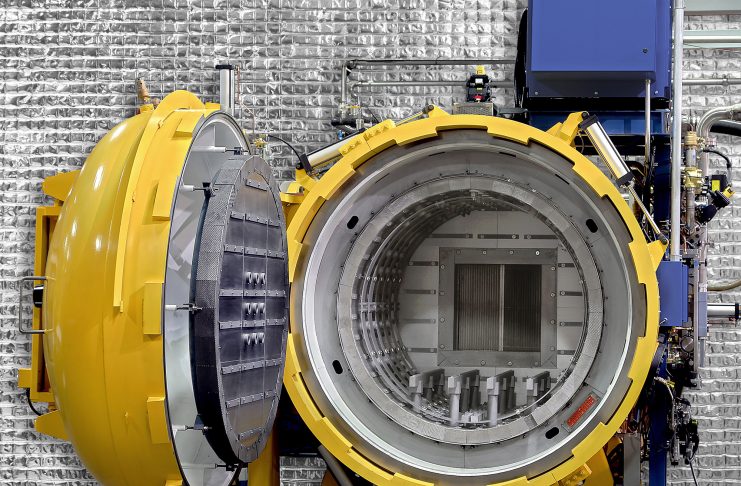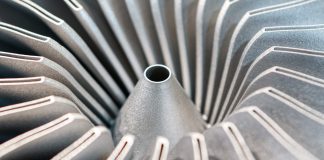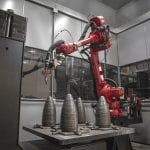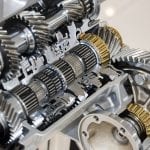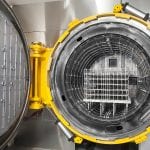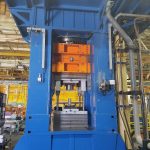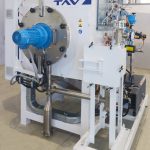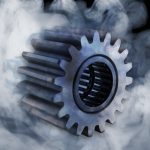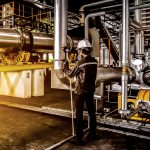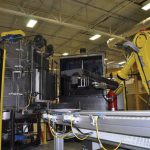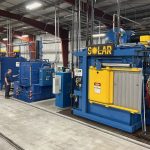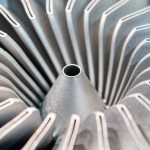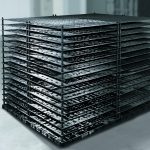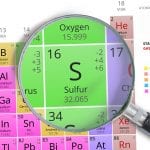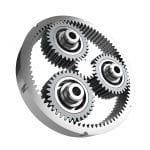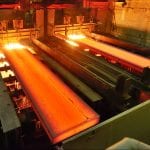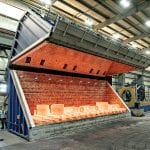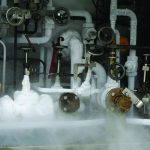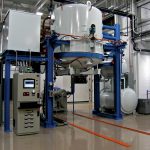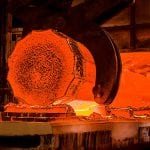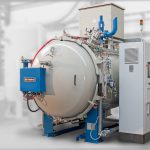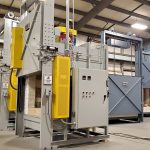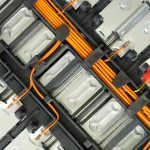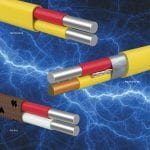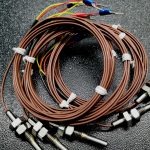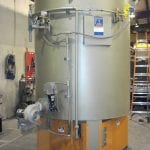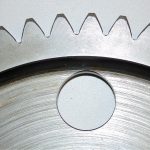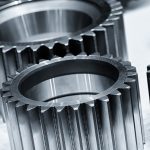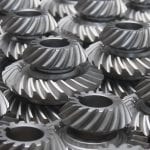Advantages of wire-arc additive manufacturing
The concept of additive manufacturing has been around for a century, but with the advent of sophisticated software and robotics, the process is fast...
Effects of the Composition of Ca-Rich Inclusions on Tool Wear Mechanisms During the Hard-Turning...
This study describes the influence of the steel characteristics of Ca-treated carburizing steel grades during hard part turning of synchronizing rings in gearbox production....
Case Study: Cost effective, low distortion carburizing of internal helical ring gear for transmissions
There are many critical factors that are assessed when designing a gear that will be used in demanding applications such as engines or transmissions....
The Advantages of an All-Metal Vacuum Furnace Hot Zone
For more than 70 years, the vacuum furnace has been available for metal processing requirements, and is widely accepted as the ideal equipment for...
4D Quench: Taking aerospace to new heights
When providing heat treatment for aerospace gears and bearing components, manufacturers are traditionally left with three choices for thermal processing: continuous flow atmospheric furnaces...
Optimizing forging machine productivity, longevity
As the forging industry’s most experienced maintenance staff and equipment operators retire, keeping legacy machines producing at full capacity is increasingly difficult. When new...
How to properly debind parts produced by metal AM
Additive manufacturing is a manufacturing technology that is gaining more and more ground among metallurgists. The process involves all the techniques used to create...
Nitrogen gas quenching pressure effect on BS S155 alloy steel in vacuum furnace
The production of metal and alloy products requires the use of heat treatment. During the heat-treatment process, quenching is a crucial step. The quenching...
10 tips to ensure accurate thermocouple measurement
Careful selection and installation of temperature sensors can ensure accurate sensor performance, which in turn improves product quality and production efficiency.
1: Select the Correct...
Energy and material efficiency of steel powder metallurgy
Concern about global warming motivates the reduction of greenhouse gas emissions from manufacturing, but the environmental impact of the whole powder metallurgy production chain...
Improving Production Safely with Integrated Heat Treat and Quenching Cell
These aspects are not just requested, but increasingly required by industrial clients looking to install new thermal systems or expand or enhance existing processes...
The future of vacuum oil quenching
Despite decades of relentless innovation, the constraints of high-pressure gas quenching have become increasingly evident. Even with the utilization of specialized inert gas blends...
Additive manufacturing: New frontiers for production and validation
Over the last few decades, additive manufacturing (AM)/3D printing has fundamentally changed the way that manufacturers approach product development. Industry is now almost universally...
Plasma nitriding as a low-nitriding potential process
Plasma/ion nitriding is a process that can be easily applied to various high-alloy steels. Some of these steels — for example M-2, S-7, D-2,...
The role of photo chemical etching in thermal management
The photochemical etching (PCE) process is distinguished by its capacity to fabricate metal parts with unparalleled accuracy. This process sidesteps the typical stresses and...
Benefits of graphite and C/C fixturing
More heat-treating engineers are making the switch to graphite fixturing using carbon composite materials.
Detrimental Effects of Sulfur on Transverse Impact Properties in Steel Forgings
Anyone who has supplied or processed forgings for the power generation, oil and gas, or shipbuilding industries, among others, is familiar with Charpy impact...
Analysis of Heat Treat Growth on Carburized Ring Gear and Multivariate Regression Model Development
In gear manufacturing and machine assembly, dimensional stability of each component and conformance to print requirements are of critical importance. During processing, dimensional changes...
Mechanical properties and thermal conductivity of lightweight and high-strength carbon-graphite thermal insulation materials
Thermal insulation composites are widely used in civil and military applications; however, it is difficult to achieve the synergy of multiple technical objectives such...
Heat Treating Education
In a recent paper by Janusz Kowalewski of Ipsen at the 3rd International Conference on Heat Treatment and Surface Engineering in Automotive Applications held...
The cutting edge of thermal processing in a forge environment
Scot Forge is a 128-year-old, 100-percent employee-owned forging company that works in multiple markets from large defense, aerospace, power generation and mining projects to...
Cryogenic process and application to ferrous alloy
Cryogenics or sub-zero treatment is the third parameter required to achieve maximum hardness in ferrous alloys.
4D high-pressure gas quenching
Thermal processing and quenching of steels for hardening is a well-established practice performed by various techniques over the centuries. A common thread has been...
Maintenance Procedures for Vacuum Furnaces
More gear manufacturers need to add vacuum furnace machines to the shop floor and include this procedure in the overall manufacturing process. As vacuum...
Operational efficiencies and minimizing energy consumption: An introduction
Energy conservation is the prevention of the wasteful use of energy. In today’s economic and climate-change environment, regulations and competition for resources require industrial...
Case study: Partnering with the medical industry
The high-tech medical industry is one of the most demanding in terms of standards, procedures, and technical parameters that must be met by the...
The importance of preventative maintenance
For those of you who work in heat treat every day, this will be nothing new; however, it will be an attempt to assist...
Investigating a new cooling technology for electric vehicles
The electric vehicle (EV) revolution is well underway: It’s estimated the number of EVs populating U.S. roads alone will double by 2024. And though...
Optimizing Temperature Measurement in Heat-Treatment Operations
Quality and efficiency in heat-treatment operations requires accurate temperature measurement. Specifying thermocouple wire and thermocouples carefully will lead to greater temperature measurement accuracy and...
Photo-chemical etching: A perfect process for heat exchanger production
Heat exchangers play a crucial role in various industrial applications, from power generation and automotive systems to HVAC systems and aerospace technology. The efficiency...
What ISO 17025 certification means for the heat-treating industry
ISO 17025 standards within the heat-treating industry are important when it comes to methods of calibration.
This is especially important at BASF, a company whose...
Heat Treat 101: A Primer
Gears play an essential role in the performance of many products that we rely on in our everyday lives. When we think about gears,...
Combustion behavior and mechanism of Ti14 titanium alloy
The combustion behavior and mechanism of Ti14 titanium alloy are studied by promoted ignition combustion tests at different oxygen pressures. The burning velocity increases...
The versatility of the pit furnace
Top-loading furnaces, commonly referred to as pit furnaces, have played a major role in the heating treating landscape for the last century or longer....
Selection of Oil Quenchants for Heat-Treating Processes
Modern quenching oils offer a wide range of capability and performance. The selection of the proper quench oil is critical for proper heat-treating operations....
Pyrometry – A Different Take
Any article on pyrometry, as it applies to AMS2750 and thermal processing, usually gets a lot of attention. Typically filled with interpretation, clarification, and...
The impact of complete lubricant removal on the mechanical properties and production of PM...
The greatest hurdle in the production of powder metal components is lubricant removal. Over the years, equipment and processes have been developed to aid...
How Gears Fail
Heat treatment plays an important — some would say critical — role in gear manufacturing. Therefore, there is a need to better understand, from...
Carburized steel mechanical properties: Case tensile strength
Editor’s note » This is part one of a three-part series on carburized steel mechanical properties.
Carburizing is a mature heat-treating process commonly used for...
Single-piece flow case hardening can be worked into in-line manufacturing
Case hardening by carburizing is the most common heat treatment in mass production, which relies on atmosphere or vacuum carburizing followed by oil or...










